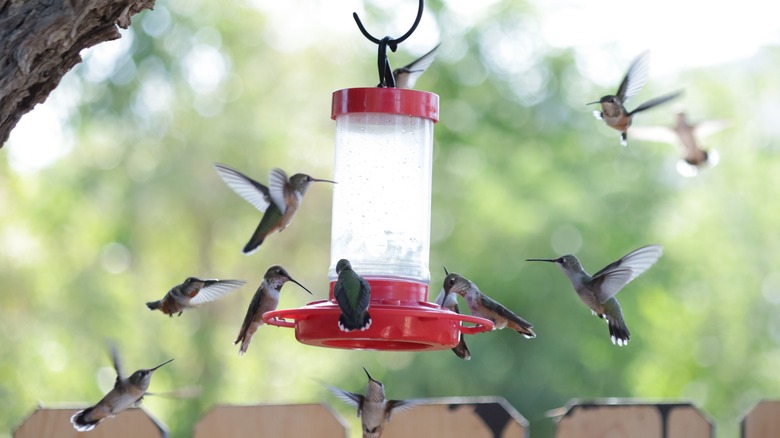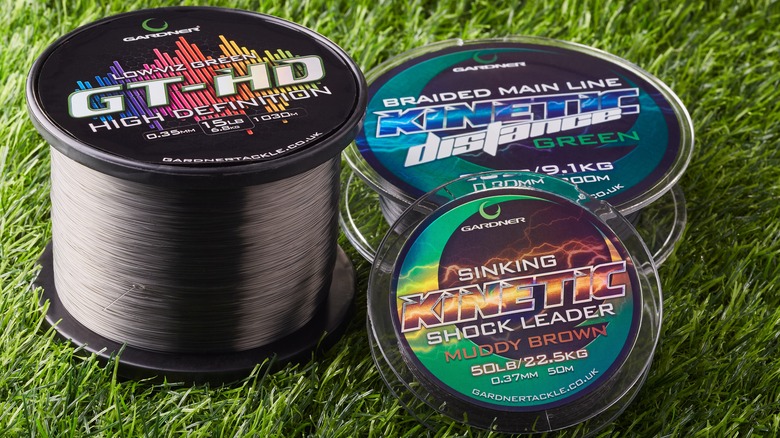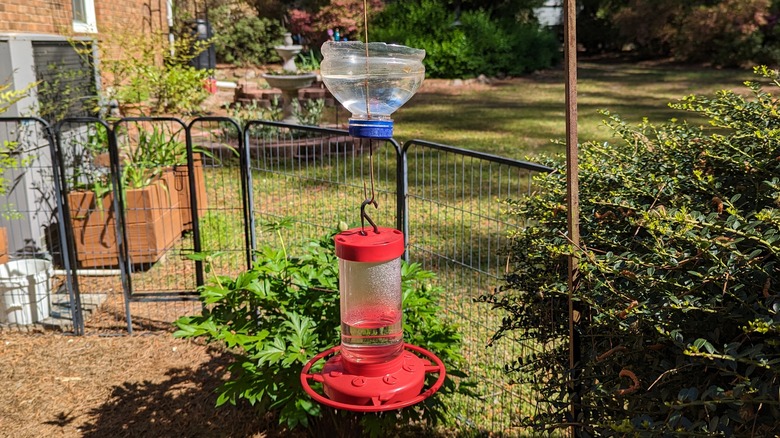Sneaky Ways Ants Are Getting In Your Hummingbird Feeder (& How To Prevent It)
We may receive a commission on purchases made from links.
Ants aren't directly harmful to hummingbirds. In fact, hummingbirds eat ants, along with other small insects, to meet their protein needs. The problem is, hummingbirds actively avoid drinking from the same cup, so to speak, as these wee six-legged beasties. Amazingly, hummers can detect when ants have been eating the sugar water in a feeder — through taste, touch, sight, and smell (some ants release a defensive stink). Hence the urgency to repel them.
Arguably, the best place to hang a bird feeder in your yard is somewhere ants won't get it. Identify where ants are building nests and avoid those spots, right? That's easier said than done. Plus, if your hummingbird feeder is leaking, you're almost guaranteed to attract ants.
Those drips signal to ants the location of your feeder. If your tree is hanging from a feeder, the ants can then traverse the trunk and branch of the tree — or they can climb up the pole it's perched atop. They congregate in the feeding bowl or around the dispenser nozzles. Sometimes, ants get so enthused by their tantalizing sweet find, they dive right into the feeder bowl. They perish in the nectar in the process, polluting and potentially contaminating it. And once a few ants have found a source of food, others arrive quickly, following a scent trail left by the scouts. Stopping an ant colony's determined march may require a multi-pronged approach — switching up your feeder location once or frequently, cleaning it regularly, or installing an ant moat.
Ants will climb almost anything to get at hummingbird nectar
Often, bottle-style feeders are the culprit. They work by taking advantage of gravity to create a pressure vacuum inside the feeder. The nectar only comes out when a hummingbird momentarily breaks the airtight seal formed at the feeding nozzle. However, over time, the pressure builds up so much that the space around the seal increases. A teeny gap forms, leading to sugary leaks that draw ants. This effect is exacerbated by hot weather or direct sun. Ants can also climb glass and, of course, walls. Mounting your feeder to a wall or window instead of a pole or string won't put a stop to those endless ant trails.
Some backyard bird experts suggest a clever trick that keeps ants out of your hummingbird feeder: hang your feeder with a nylon fishing line. The idea is that it's so fine and smooth that little ant feet can't cling to it. You may find advice online regarding rubbing sticky substances, like petroleum jelly or cooking oil, or smelly repellants, like menthol or pyrethrum, on the pole or wire to trap or repel curious ants. It's better to avoid these tips. Sticky, oily substances can clog up a hummingbird's feathers, rendering them unable to fly properly. Chemicals, even natural ones, may harm the health of your feathered visitors. One exception might be cedar — both the wood and the oil. The natural pest deterrent has been shown to repel even fire ants from feeders.
Get medieval on ants laying siege to your feeders with a moat
Some feeders come with ant moats. These cavities filled with water create an uncrossable barrier, at least for an ant. Often, however, they're too shallow and the water evaporates quickly. Use an external ant trap instead, which is effectively a deep cylinder that sits between the feeder and the hook or branch it hangs from. Walmart sells a cute upside-down umbrella-shaped ant moat by Harlier for under $2 — or you make your own ant moat to keep pests out of your hummingbird feeder. An ant moat is only effective if you check, clean, and refill it often. The same goes for the feeder itself.
Once a week or sooner during the summer months, take your feeder down, throw away the old nectar, and wipe everything down with hot, not boiling, water. At this time, do some leak maintenance. Tightening all parts of the feeder, especially those involved with dispensing sugar water. Note that there are leak-proof dripless and inverted bottles feeders available for sale if you need new hummer feeding equipment when your old feeder is looking shabby. If you've been battling ants, hang your refreshed feeder back up in a new location in the open, away from areas you know host ant nests, in the shade (to prevent further leaks from heat expansion), and out of the wind. Sticking your hummingbird feeder pole in a body of water like a pond will also keep ants away.


